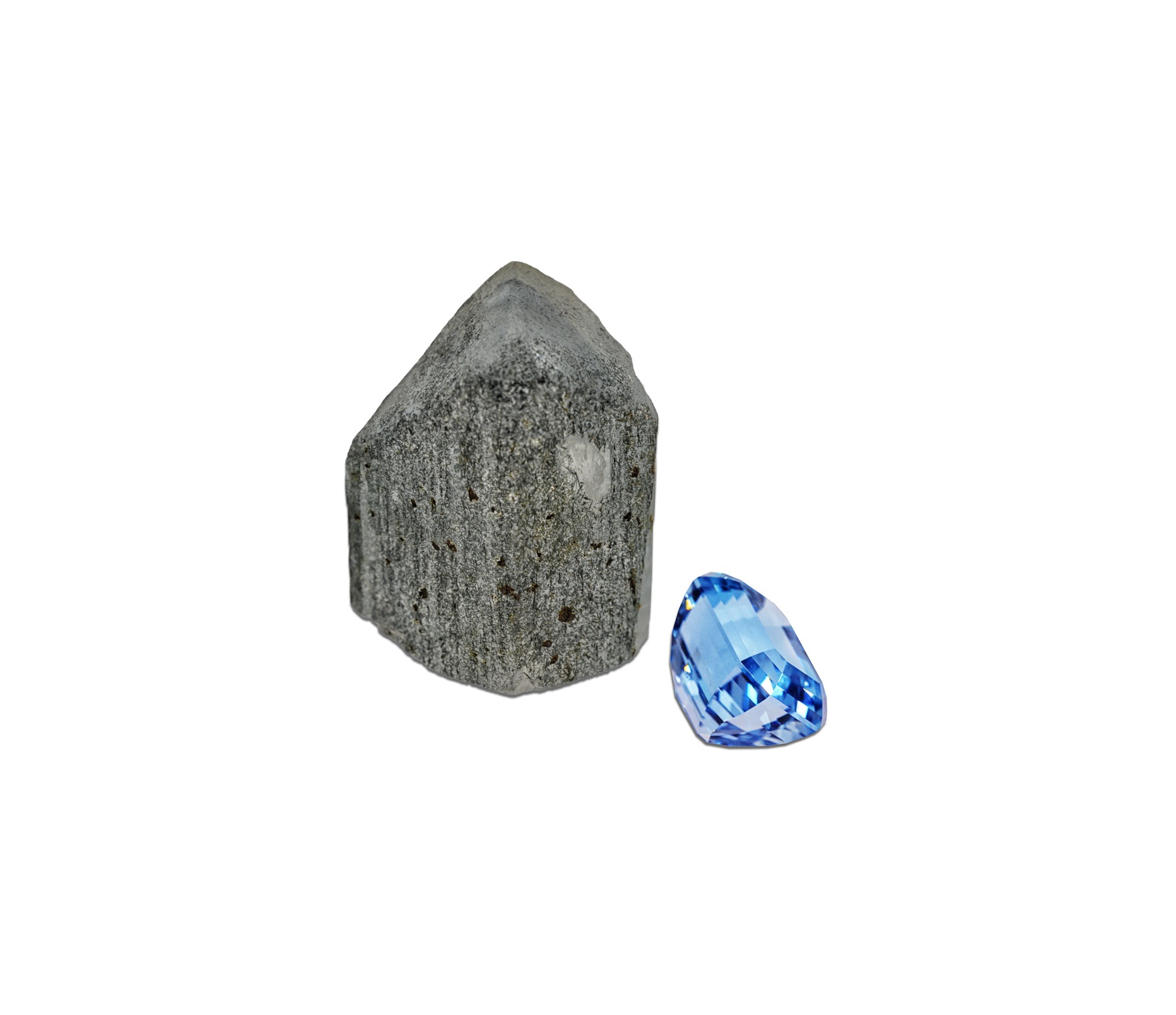The gemstone topaz is the birthstone of November. Topaz is formed from magma deposits, which are chemically made up of aluminum, fluoride, and silicone. Its appearance and properties make it such a unique crystal.
History
Topaz is believed to have originated from the Greek name Topazios, the name of a small island in the Red Sea called Zabargad in the present. Since gem traders were unaware that these yellowish stones were different minerals, Topaz has been used as a name for any yellowish gemstone for at least two thousand years. After all those years, gem traders recognized that beryl, quartz, corundum, and olivine had yellow variations and did not necessarily mean a type of topaz gemstone.
Since then, Topaz has been called a variation of names, which sometimes are common names given to its color variation, including: Precious Topaz for yellow or orange Topaz; Pycnite for a columnar or yellow-white variety of Topaz; Imperial Topaz for yellow, brown, red, pink or pink-orange Topaz; Mystic Topaz for colorless Topaz; Gouttes d’eau for colorless cut topaz crystals; Chrycolithos; Pyrophysalite; and Physalite.
Texas possesses light blue varieties of Topaz, though it is not commercially excavated there. In 1969, blue Topaz became an official gemstone in Texas. In the same year, Utah implemented Topaz as its state gemstone.
Where is Topaz mined?
Throughout the middle ages, the deposit in the Erzgebirge Mountains in Germany was the primary source of Topaz. Hundreds of kilograms of yellow to brown topaz crystal were mined from that mountain deposit.
In the 19th century, the Ural Mountains of Russia were the first leading source of Topaz. The pinkish-orange gemstone mined on that mountain was named Imperial Topaz to honor the Russian czar. Only royals could own it.
When the detection of large topaz deposits in Brazil was known in the 19th century, Topaz became much more affordable and broadly accessible. Colorless Topaz was turned to color blue using irradiation treatment in the 1960s. The blue variety flooded the market, rapidly becoming the least expensive gemstone.
Today, plenty of topaz deposits are found in different parts of the world, such as in the United States, Madagascar, Myanmar, Brazil, Namibia, Zimbabwe, Mexico, Pakistan, Sri Lanka, China, and Russia.
Popular usage
It is used mostly as a gemstone for jewelry and ornaments.
It can be a raw material for making solid materials that can retain their strength at high temperatures. They can be used in furnaces, kilns, reactors, and incinerators.
Topaz is used in making patterns for forming glass and metals.
It can also be used as a raw material for producing fluorine compounds and ceramic manufacture.
Topaz is characterized by its metaphysical properties: including the ability to bring joy, good health, abundance and generosity. It is said to be very effective for cleansing the aura and inducing relaxation because it releases tension at all levels.
Shapes and Sizes
Topaz can come in sizes ranging from a fraction of a carat to a record 31,000 carats or 14 lbs. Its shape can also be varied, such as a square, rectangle, or oval.
Scarcity
Gemstones are not always abundant. Some of them occur only in those zones where conditions were suitable for their formation. But the mineral Topaz is plentiful and prevalent throughout the world. The colorless Topaz is one of its variants that is most abundant. However, substantial see-through deep pink or orange crystals are scarce.
The natural blue Topaz is rare and hard to find, so authorities prompted the production of the stone using a treated, colorless topaz. According to the website Gemstone Universe, there has been a scarcity of blue Topaz in the market, particularly for big sizes.
The golden-yellow variety of Topaz known as Imperial Topaz is also relatively scarce.
Interesting facts
- Many years ago, Greeks assumed that Topaz gave them strengths.
- During the Renaissance, European people believed that Topaz could break magic spells and disperse rage.
- In India, ancestors believe that Topaz worn directly above the heart promises a long life, beauty, and intelligence.
- The American Golden Topaz, a popular gemstone with 172-faceted Topaz weighing 22, 892.5 carats, equivalent to 4.57859 kilogram, is the largest cut yellow Topaz in the world and one of the most significant faceted gems of any type in the world.
- The color of the gemstone Topaz is not due to an element of its elemental chemical composition; instead, it is caused by impurity elements or defects in its crystal structure. In short, it is allochromatic.
- Topaz has an extraordinarily varied color range. Besides brown, Topaz includes various tones and saturations of blue, green, yellow, orange, red, pink, and purple.
- Plenty of colorless Topaz is often treated to give it a blue color.
- The rarest form of Topaz is red.
General Cost
Since colorless Topaz is abundant, they are usually considered as low value. Natural low-rarity Topaz can start as low as 8 dollars per carat. The rarest types can be as expensive as 3,000 dollars per carat or more. Prices depend on the gemstone’s natural color, carat, and clarity.
Topaz and Zodiac Signs
As mentioned above, the gemstone topaz is November’s birthstone and the gemstone of the Zodiac sign Scorpio, characterized by an intense and confident character. Blue topaz is the alternate gemstone for Sagittarius, which has a common trait of being confident, supportive, and faithful.
Topaz includes spiritual meanings of love, good fortune, protection, and truth.
Final Thoughts
The gemstone topaz has a lot of myths about its “powers” with a rich history. But, one of its best superpowers is the variety of colors and the beautiful appearance that brings delight to people.


